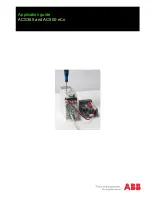
10
TK-390
6-21. Squelch Level
The preset squelch level is varied in user mode (0 to 15).
Press the key programmed to “squelch level”, the trans-
ceiver enters to “squelch level adjust mode”.
The squelch level can be adjusted by group “up/down”
function key or channel “up/down” function key. Press the
key programmed to “squelch level” again, the adjusted
level is memorized and returns to the normal user mode.
6-22. Squelch Momentary
While pressing this key, the transceiver unmutes
speaker regardless of an existence of a carrier and “MON”
appears and busy “LED” lights on.
Release this key, the transceiver mutes the speaker and
“MON” disappears and busy “LED” lights off.
6-23. Squelch Off
Press this key, the transceiver unmutes speaker regard-
less of the existence of a carrier and “MON” appears and
busy “LED” lights.
Press this key again, the transceiver mutes the speaker
and “MON” disappears and busy “LED” lights off.
6-24. Talk Around
Press this key, the transceiver uses the receive fre-
quency and the tone for transmission.
The operator can call the other party directory (without
repeater). Press this key again, the talk around function
goes off.
6-25. Emergency Call
Press this key, the transceiver enters to an emergency
mode. In this mode, the channel is switched to the pro-
grammed emergency channel automatically and starts
transmission with an emergency ID code which is pro-
grammed to ANI board.
The display depends on “Emergency Channel Display”
setting.
6-26. SP Attenuation
Press this key once, the volume level of speaker-micro-
phone is attenuated. Press this key again, the volume level
of speaker-microphone returns to the previous level.
7. 2-Tone
Built-in 2-Tone decoder (decoder program 1, decoder pro-
gram 2, decoder program 3) is available for option signalling.
It is possible to use individual call or group call.
8. DTMF
Built-in DTMF encoder is available for dialing (Manual
dial, Auto-dial (9 memory), Re-dial (1 memory)) (Keypad
model only). Built-in DTMF decoder is available for option
signalling.
It is possible to use individual call, group call, DBD (Dead
Beat Disable).
9. Data Programming (PC Mode)
9-1. Preparation and Connection
TK-390 transceiver is programmed by using a personal
computer, programming interface cable KPG-36, and pro-
gramming software KPG-38D.
The programming software can be used with an IBM-PC
or compatible machine. Figure 3 shows the setup for pro-
gramming.
9-2. Programming Interface Cable KPG-36 Description
The KPG-36 is required to interface TK-390 to the com-
puter. It has a circuit in its D-sub 25pin connector case that
converts RS-232C logic level to TTL level.
KPG-36 is used to connect between TK-390 universal
connector and RS-232C serial port of computer.
9-3. Programming Software KPG-38D Description
KPG-38D is the programming software for TK-390 sup-
plied on a 3.5" floppy disk. This software runs under MS-
DOS version 3.1 or later on an IBM-PC/XT, AT, or PS2 or
compatible machine.
The data can be input to or read from TK-390 and edited
on the screen. The programmed or edited data can be
printed out. It is also possible to tune the transceiver.
We recommend that install KPG-38D for example to
harddisk first then use it.
KPG-38D instruction manual part No. : B62-0814-XX.
Fig. 3
KPG-36
IBM-PC
KPG-38D
OPERATING FEATURES











































